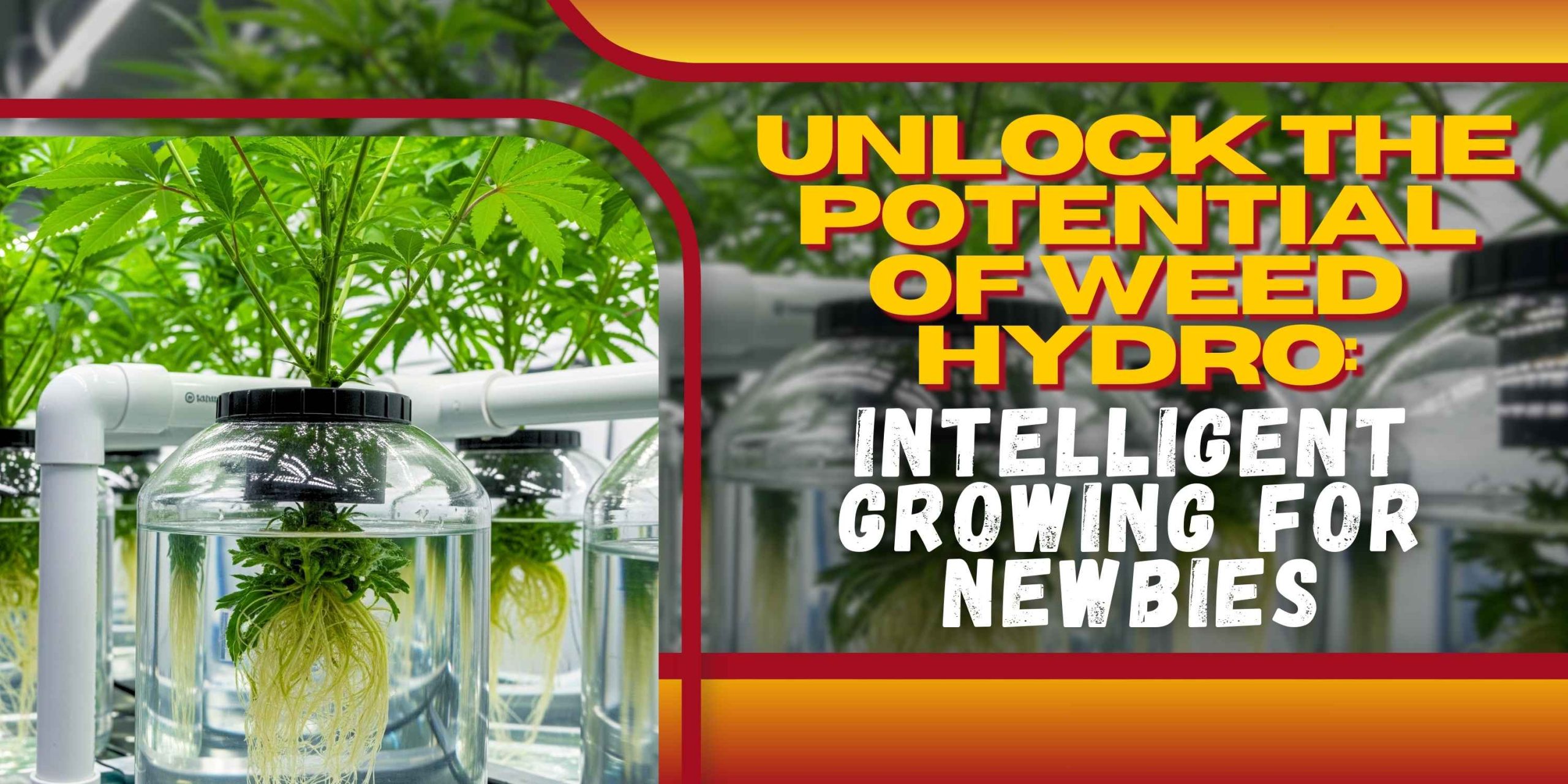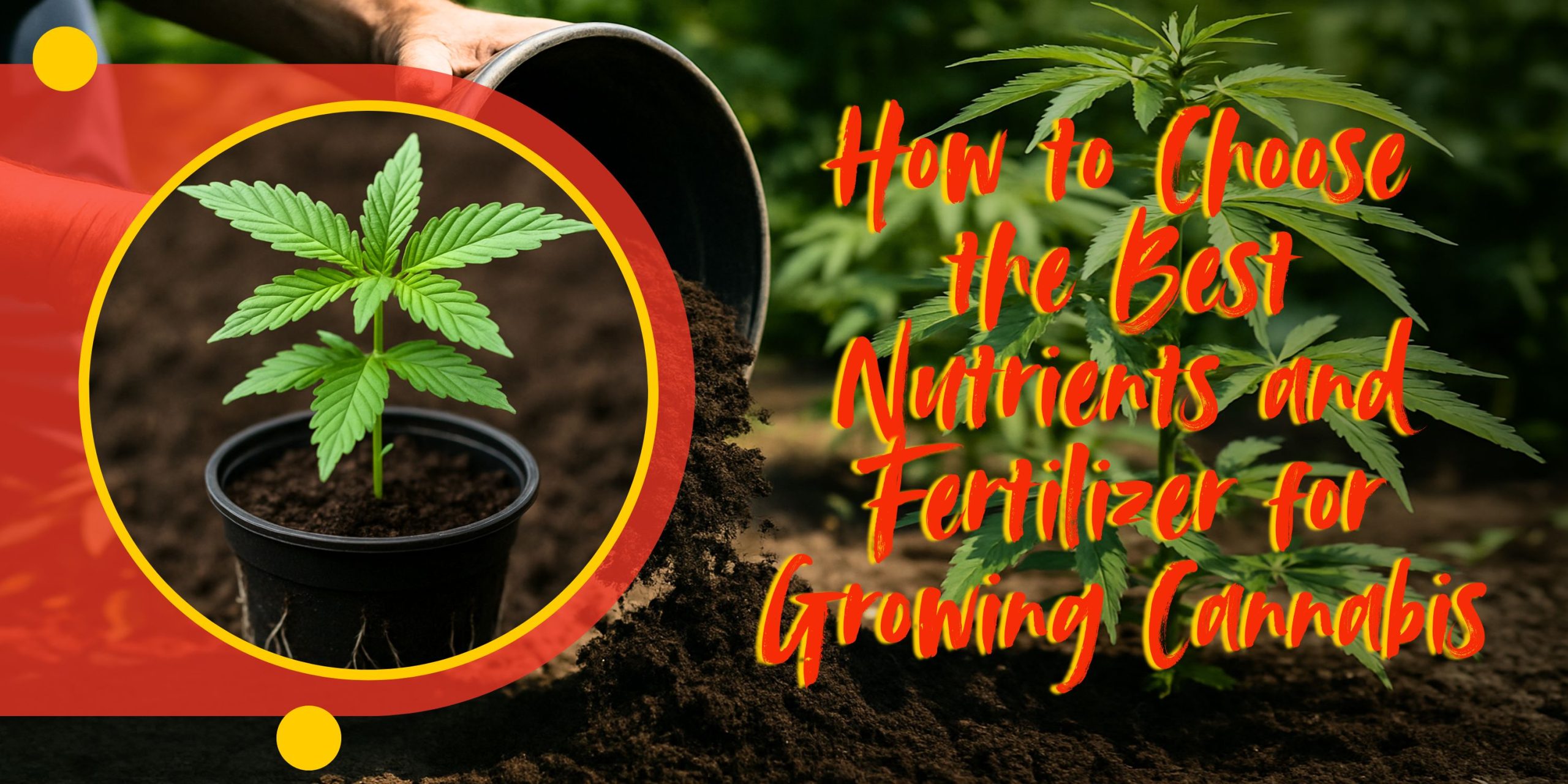Avoiding the root system and the soil, foliar feeding is a very efficient extra way of cannabis growing that sprays liquid nutrients straight onto the plants. This technique allows cannabis plants to use necessary nutrients practically immediately, thereby becoming a very strong way to offer a deficiency remedy and enhance general plant health. When done correctly, foliar feeding boosts plant vitality, corrects nutrient deficits, and may even help prevent diseases and pests.
Producing greatest advantages requires knowledge of how and when to use foliar sprays. The effectiveness of foliar feeding is influenced by environmental factors, timing of administration, and kind of nutrients employed. The science underlying foliar feeding, its advantages, and how often to foliar feed cannabis will be covered in this tutorial.
Knowing the Foliar Feeding Mechanism in Cannabis
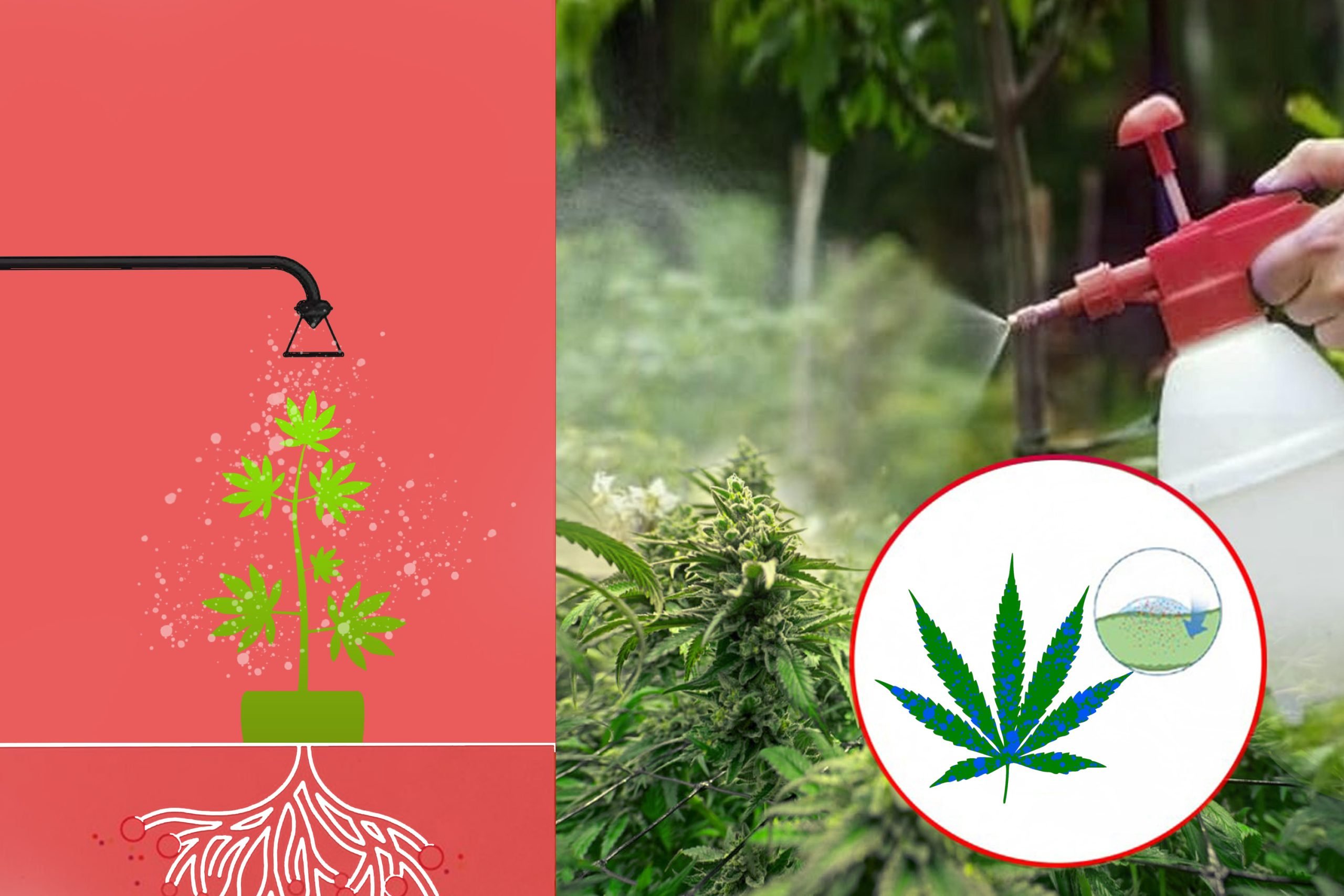
Nutrient absorption depends on cannabis leaves, so foliar feeding takes use of this unique capacity. On the surface, the leaves have tiny pores called stomata mostly responsible for gas exchange. The stomata open under good environmental conditions, letting in carbon dioxide and releasing oxygen. At the same time, the stomata can absorb liquid nutrients delivered via foliar sprays.
However, the stomata are not the only ones with foliar absorption. Though at a far slower pace, the cuticle—the outer covering of the cannabis leaf—can also absorb nutrients. The density of the foliar spray, the presence of a surfactant (which lowers surface tension and promotes spread), and plant health all influence nutrient uptake efficiency.
Benefits of Foliar Feeding for Cannabis Growth
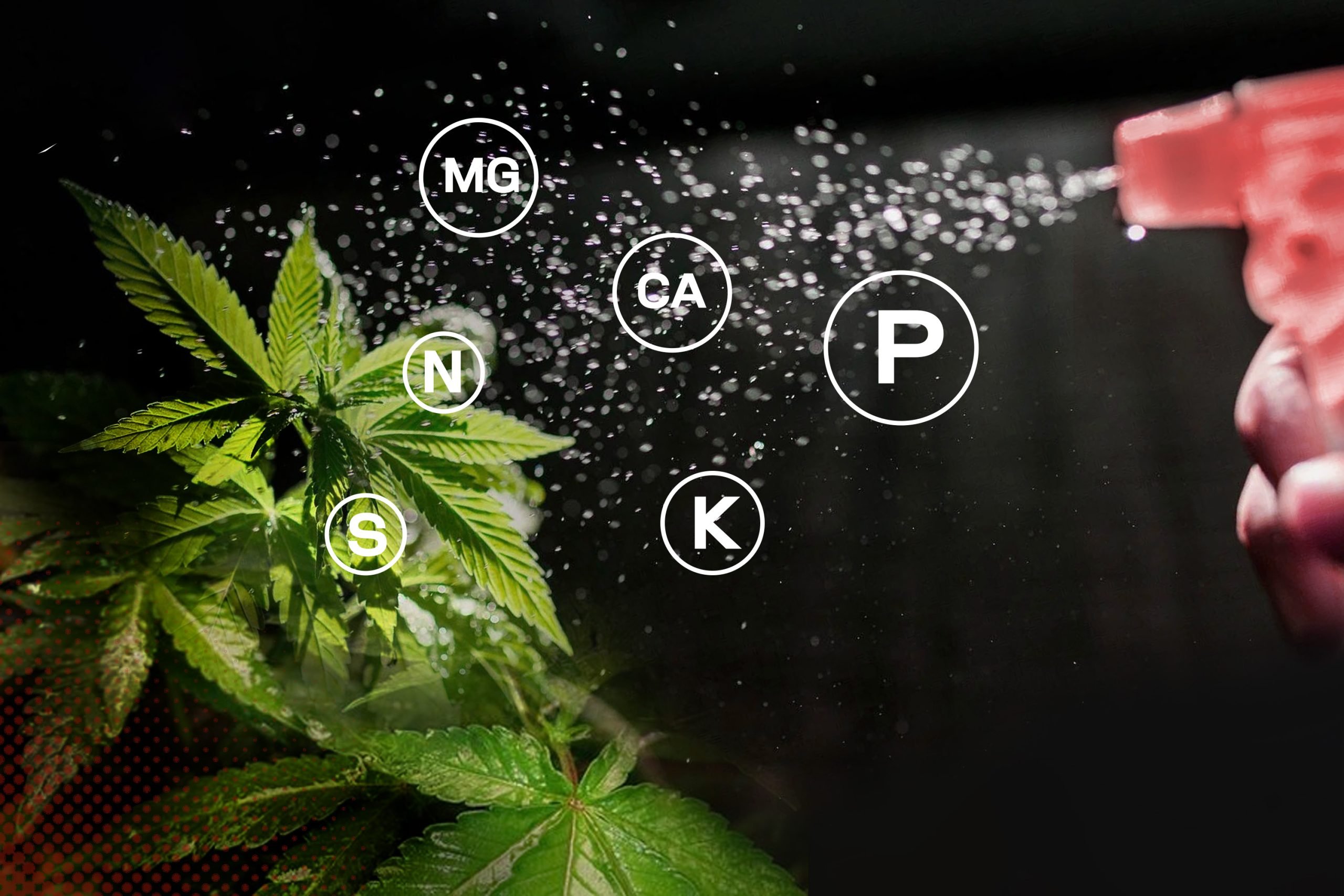
1. Quick Fix of Nutrient Deficiencies
Many factors could contribute to deficiencies, including uneven soil pH, nutrient lockout, and problems with root health. By feeding the fertilizer straight into the leaves, foliar feeding avoids these root issues and lets the plant use it without waiting for root uptake. This is particularly useful in compensating for shortages in nitrogen (N), calcium (Ca), magnesium (Mg), and iron (Fe), all of which are essential for plant metabolism.
Untreated deficiencies will hinder growth, weaken the plant, and lower general production. Foliar feeding allows cannabis plants to recuperate in a short period of time and provides an instant solution avoiding long-term stress. Though it cannot completely replace soil or hydroponic feeding, this approach is a helpful tool for guaranteeing appropriate nutritional balance.
2. Better Nutrient Absorption and Efficiency
By giving cannabis plants nutrients in their purest accessible form, foliar feeding wastes less and boosts general efficiency. Unlike soil application, which can lead nutrition loss or lockout, foliar feed cannabis delivers nutrients straight to their destination. This improves nutrient use and lessens too much accumulation in the growing media.
Secondly, foliar sprays could improve root function by promoting microbial contact in the rhizosphere. Plants will tend to increase carbohydrate synthesis with a leaf supply of nutrients; the resulting glucose then nourishes the good soil microorganisms. Over the long run, this microbial activity drives nutrient cycle and root nutrient absorption.
3. Protection from Diseases and Pests
Apart from its dietary purposes, foliar spraying also acts as a tool for disease and insect control. Organic sprays created from potassium bicarbonate, neem oil, or silica turn the leaves unappealing to undesirable insects such spider mites, aphids, and thrips. These organic materials cover the leaf surface, therefore rejecting insects while the plant is free to absorb required nutrients.
Fungal diseases like powdery mildew and botrytis (bud rot) can also be prevented and treated with foliar feeding. Low concentration potassium bicarbonate or hydrogen peroxide solutions applied by leaf spraying can help to control fungal growth and keep healthy plants. However, to prevent residue build-up on the buds, one should not over-spray in the late flowering stages.
Ideal Timing for Foliar Applications
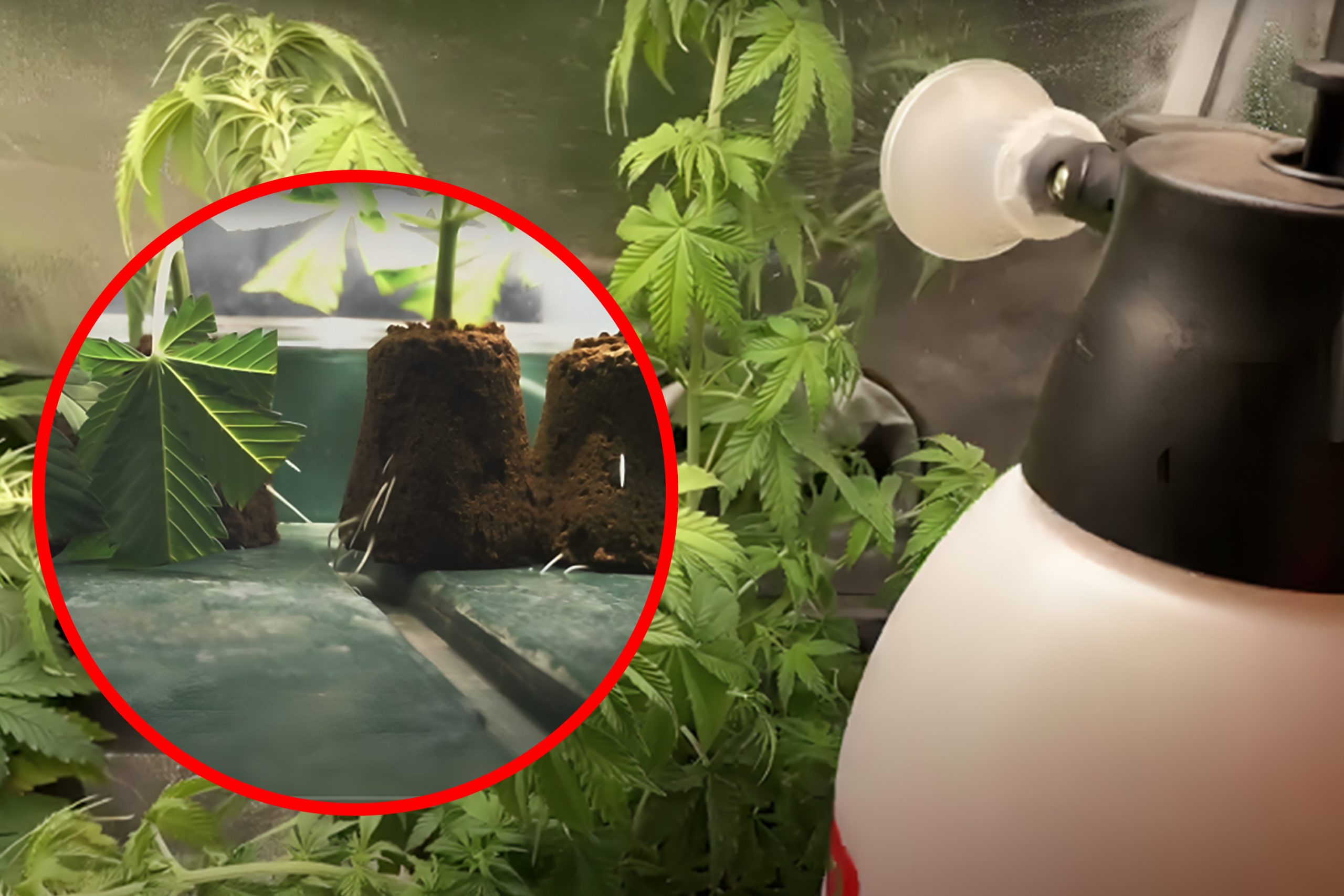
The effectiveness of foliar feeding depends much on timing. The right time of application guarantees best absorption and lowers the possibility of nutrient waste or plant damage.
1. Applications in Early Morning and Late Afternoon
Early morning or late afternoon, when stomata are open, is the best time to apply foliar sprays. During these hours, temperatures are lower and humidity is higher, which helps to absorb nutrients. Spraying in midday when the sun is intense could produce leaf burn from quick evaporation and increased light sensitivity.
2. Avoiding High Temperatures and Strong Airflow
Using foliar feeding under severe heat or strong winds makes it less effective. High temperatures cause stomata to close as a defensive response, hence blocking nutrient absorption. High winds also hasten evaporation; the plants cannot take in the put on nutrients. For best performance, ideally, temperatures should be below 26°C (78°F).
3. Best Growth Stage for Foliar Feeding
The vegetative period and early flowering stage are when foliar feeding is most effective. Cannabis plants are actively growing at these stages and can make good use of the used nutrients. To prevent residues building on the buds, which could affect their taste and safety for ingestion, foliar spraying should be avoided at the late flowering stage.
Preparing a Good Foliar Spray Solution
The correct preparation of the solution will help foliar feeding to work best. Correctly adjusted foliar spray ensures the optimal nutrition absorption and prevents overfeeding or leaf damage.
1. Choosing the Right Nutrients
Some nutrients don’t go well with foliar feeding. Among the most beneficial foliar-applied fertilizers are:
- It helps to reinforce cell walls and prevents shortages.
- Important for chlorophyll formation and photosynthesis is magnesium (Mg).
- Iron (Fe): Important for plant health and enzymatic activities.
- Seaweed Extracts: Have natural plant hormones that boost plant resilience.
- Amino Acids: Improve nutrient absorption and stress tolerance.
2. pH Adjustment and Dilution
When making a foliar spray, concentration is essential. While a solution that is too weak could be useless, a solution that is too strong could scorch the leaves. Usually, one-fifth of the suggested root feeding strength is where nutrients should be diluted. For best absorption, the pH of the solution should also be changed to between 5.5 and 6.5.
3. Including a surfactant
A surfactant, such as a small amount of liquid soap or aloe vera extract, helps the solution to spread uniformly across the leaf surface. This prevents the development of water droplets, hence enabling uniform nutrient absorption and reducing runoff.
Conclusion
For cannabis producers, foliar feeding is a benefit since it provides fast nutrient absorption, improved plant health, and more insect and disease protection. Growers may optimize plant development and output by foliar spraying at the correct moment and with the optimal nutritional content. On the other hand, cannabis foliar feed should be used as a supplement to traditional root feeding rather than a replacement. Done correctly, foliar feeding can significantly enhance cannabis growth, hence producing better plants and more harvests.
FAQs About Cannabis Foliar Feeding
1. Can autoflowering cannabis plants be foliar fed?
Particularly in the veg phase, foliar feeding can be used on autoflowers. However, avoid over-spraying and stop foliar sprays early in flowering to prevent bud contamination since autoflowers have a short lifetime.
2. How can I determine how frequently to foliar feed my cannabis plants?
Foliar feeding should be done once or at most twice a week for best results. Overuse could lead to leaf nutrient buildup or potential burn. Always observe how the plant responds and change accordingly.
3. Can foliar nutrients be coupled with fungicides or pesticides?
Certainly, but with caution. Though you first test it on a tiny area of the plant to be sure no negative responses will occur, certain organic pesticide products like neem oil or potassium bicarbonate can be added to foliar nutrition without harm.
4. After foliar feeding, what is the ideal way to dry leaves?
Give plants enough air movement to help avoid fungal growth. Use a gentle fan to help drying if leaves are left too damp. To prevent burning, don’t expose plants to direct light following spraying.
5. Can I foliar feed using tap water?
The quality of the tap water will determine this. Excess chlorine, heavy metals, or an imbalanced pH in tap water will negatively impact nutritional absorption. For best outcomes, use dechlorinated or filtered water.




